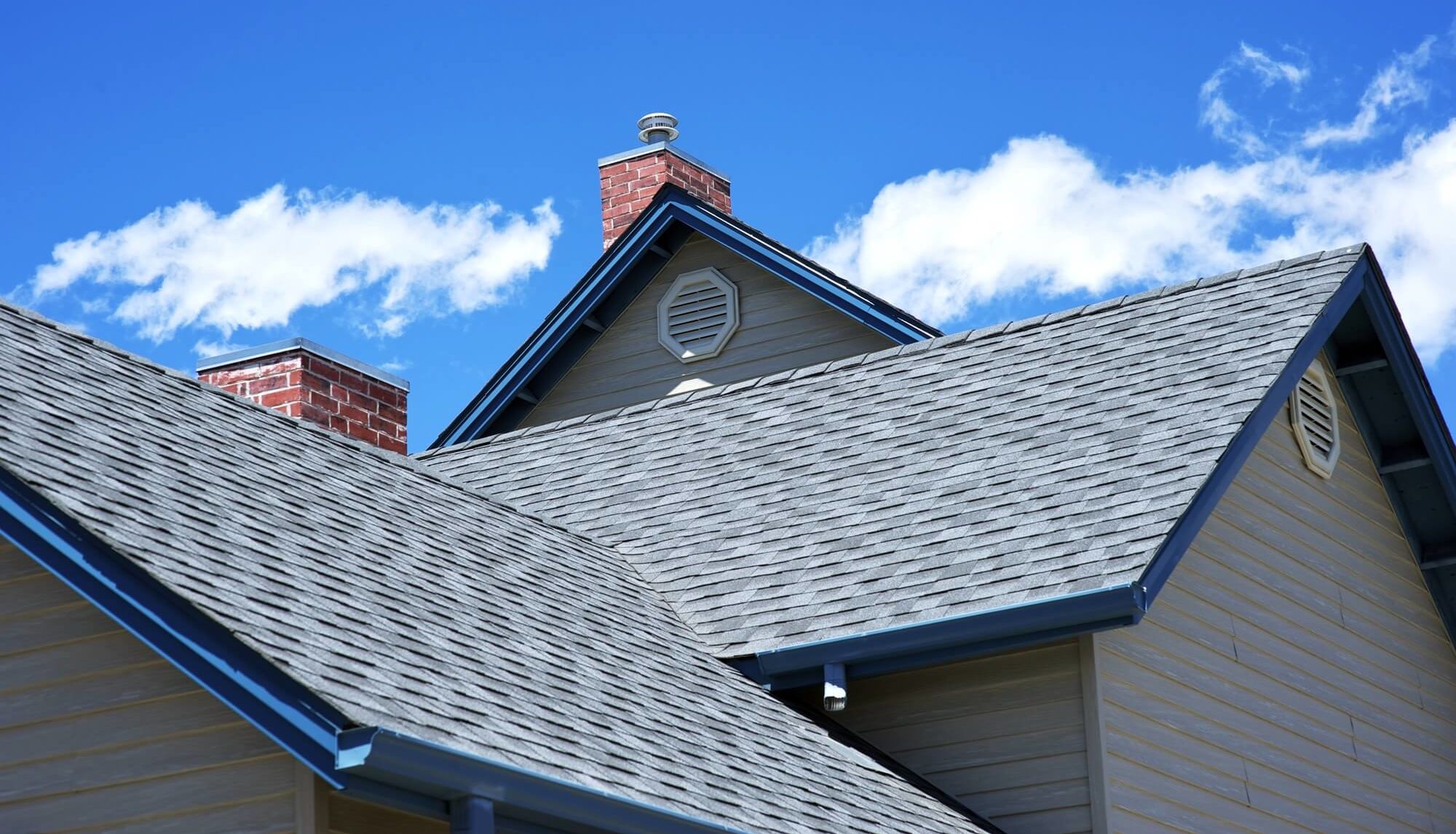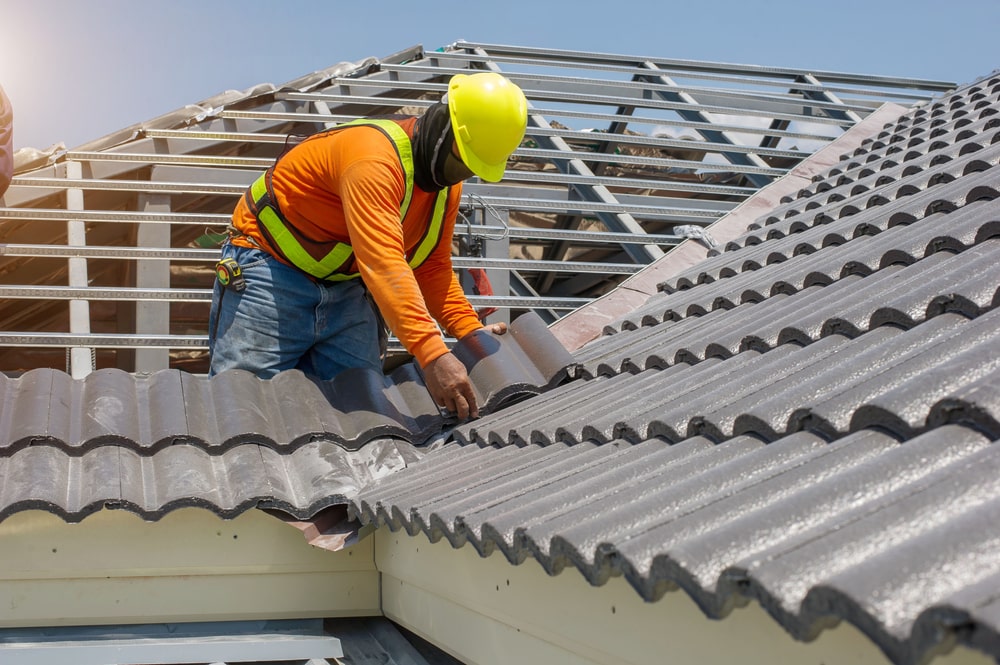Roof repair company: reliable solutions for leaks that protect your investment.
Wiki Article
A Comprehensive Guide to the Installment Process for Your New Roof System
The installation procedure for a new roofing system calls for mindful factor to consider of numerous factors. From assessing the roofing system's structural stability to picking suitable materials, each action plays a crucial duty in making certain a successful end result. Recognizing the nuances of setup can stop future problems and improve toughness. What are the crucial actions one must follow to achieve a lasting and reputable roofing? The solution hinges on an organized approach that deals with every essential aspect.Comprehending Various Roof Materials
When picking a roof covering system, understanding different roof covering products is important for making a notified decision. Different materials offer distinct benefits and drawbacks, influencing sturdiness, cost, and visual appeals. Asphalt tiles are preferred for their price and ease of installment, making them a common option for residential buildings. Metal roof, recognized for its durability and resistance to extreme weather condition, charms to those seeking resilience. Clay and concrete tiles provide an one-of-a-kind aesthetic and excellent insulation yet can be heavier and a lot more costly. Slate roof covering, commemorated for its natural beauty and remarkable life-span, has a tendency to be a costs choice needing competent setup. For environmentally-conscious house owners, environment-friendly roof, which integrate plant life, present lasting benefits. Comprehending these products permits home owners to align their choice with budget plan, environment considerations, and individual design preferences, ultimately making sure a roofing remedy that satisfies their needs efficiently.Examining Your Roof covering's Architectural Integrity

Assessing a roof's structural stability is essential for ensuring its durability and security. This process entails checking the roofing framework for any type of indicators of weakness, identifying possible water damages, and determining the tons ability to support various roof covering products. Resolving these variables will certainly aid maintain the overall wellness of the roof covering system.
Inspecting Roof Covering Framework
Before setting up a brand-new roof system, it is vital to completely check the roof framework to validate its architectural stability. This procedure entails reviewing vital parts such as rafters, trusses, and the overall framework design. A competent inspector must seek indications of wear, bending, or any structural shortages that can jeopardize the brand-new roof covering installation. Furthermore, it is vital to look for proper tons distribution, ensuring that the structure can support the weight of the brand-new materials. Any kind of determined issues should be attended to before proceeding, as they can bring about considerable troubles down the line. By prioritizing this inspection, property owners can assure a reliable and resilient roof that will certainly hold up against the examination of time.
Identifying Water Damage
Water damage can significantly affect a roofing's architectural stability, making it essential to recognize any kind of signs early in the examination procedure. Home owners need to look for discoloration or stains on walls and ceilings, which may indicate leaks. Drooping locations in the roof covering or ceilings suggest accumulated wetness that can endanger architectural components. Examining the attic is essential; mold growth and damp insulation are indicators of water intrusion. Furthermore, analyzing the roof surface for missing out on roof shingles, fractures, or rust on metal components can expose prospective vulnerability to water damages. Normal evaluations can assist in early detection, permitting prompt fixings that preserve the roof's integrity and avoid comprehensive damage. Resolving these signs immediately is crucial for preserving a sturdy and risk-free roof.Assessing Load Ability
Reviewing the tons capacity of a roof is necessary for ensuring its structural stability and durability. This assessment entails taking a look at the materials made use of in the roofing system's construction, the underlying structure, and the total design. Factors such as snow accumulation, wind load, and the weight of roof covering materials have to be thought about to determine whether the framework can sustain added lots. An architectural engineer can supply valuable understandings, carrying out estimations based upon local building regulations and ecological conditions. Routine examinations and maintenance likewise play an important function in recognizing potential weaknesses. By thoroughly examining tons capability, house owners can avoid pricey damages and make specific that their brand-new roof is resilient and risk-free for years to find.Preparation and Readying for Installation
Reliable planning and preparation are crucial actions before setting up a roof covering system - roof repair pacific mo. This includes assessing specific roof demands and choosing the proper materials that best fit those requirements. An extensive understanding of these elements can significantly influence the success and longevity of the roofing projectAnalyzing Your Roof Covering Demands
Just how can one assure that their roof covering project satisfies both useful and aesthetic demands? An extensive examination of roof covering requirements is important. This entails taking a look at the current roof covering's condition, determining any kind of damages, and establishing architectural stability. House owners must consider their environment, as weather significantly impact roof covering material selections and longevity. Furthermore, examining building style and community appearances is crucial for maintaining property value and allure. Recognizing personal choices and budget constraints additional help in making notified choices. Seeking advice from with roof covering specialists can give valuable understandings and referrals customized to specific requirements. By meticulously assessing these aspects, property owners can assure their roof covering project lines up with their one-of-a-kind needs and enhances their residential or commercial property's total appearance.
Selecting the Right Products
When selecting products for a roof covering job, it is important to consider both capability and aesthetic appeals to guarantee a successful setup. Home owners must think about the climate of their region, as particular products carry out far better under specific weather. Metal roofings use toughness in locations susceptible to heavy snowfall, while asphalt shingles may be more cost-effective for milder environments. In addition, the design of the home plays a considerable function; materials should complement the building style to enhance aesthetic allure. Sustainability is one more element; green choices like solar ceramic tiles or reclaimed timber can lower ecological effect. Ultimately, choosing the appropriate products entails stabilizing these elements to secure a visually appealing and durable roof system.Security Precautions Throughout Setup
Making sure safety throughout roof system setup requires careful attention to information and adherence to established methods. Firstly, employees need to wear proper individual protective tools (PPE), consisting of headgears, gloves, and non-slip shoes, to minimize injury risks. Scaffolding and ladders must be firmly positioned and preserved to give stable job surfaces. It is necessary to check the roofing framework for weaknesses or damage before beginning work, as this can prevent mishaps later.Additionally, installers must be learnt fall protection strategies, including using harnesses and guardrails. Weather likewise play a substantial role; work must be held off throughout high winds, rain, or storms. Additionally, all products and tools need to be arranged and safeguarded to avoid tripping dangers. By prioritizing these safety precautions, the danger of mishaps can be significantly lowered, guaranteeing a safer working atmosphere for all included in the roof covering installment procedure.
Step-by-Step Setup Process
A successful roof installation involves a series of carefully planned steps that guarantee both effectiveness and top quality. Originally, the old roof covering product need to be gotten rid of, ensuring the underlying framework is undamaged. Next off, any required fixings to the roofing deck are performed, reinforcing its security. Following this, a wetness barrier is installed to protect versus water infiltration. The choice of roof covering Source material, such as roof shingles or steel panels, is after that set out, beginning from the eaves and advancing upwards. Each piece is secured meticulously to hold up against weather. Ventilation systems are incorporated to advertise airflow and protect against wetness accumulation. Flashing is set up around smokeshafts and vents to more safeguard against leakages. The setup is assessed for compliance with regional structure codes and manufacturer specs. This detailed strategy ensures a trustworthy and sturdy roofing system that satisfies homeowner assumptions.Finishing Touches and Assessments

As soon as the installation of all components is full, a comprehensive assessment adheres to. This includes checking for proper alignment, secure attachment, and sufficient sealing of seams. Assessors likewise examine ventilation systems to guarantee peak air movement and dampness administration.
Furthermore, any particles or remaining materials from the installation must be gotten rid of from the roof covering and bordering area. By carefully attending to these information, home owners can ensure that their new roof covering system is not just practical however also aesthetically attractive, setting the phase for lasting performance and sturdiness.
Maintenance Tips for Your New Roofing system
While lots of house owners might forget the importance of regular roof upkeep, establishing a routine can significantly extend the life-span and performance of a brand-new roof system. Regular examinations need to be conducted at least twice a year, preferably in springtime and autumn, to identify any potential concerns early. Home owners need to inspect for missing or loose shingles, indicators of wear, and particles accumulation in valleys and seamless gutters.Cleansing the roofing system surface area and rain gutters is essential to stop water damage and mold development. In addition, trimming overhanging branches can lessen wear and tear triggered by falling particles. It is also recommended to monitor indoor ceilings for indicators of leakages or water discolorations, which can indicate roofing system issues.
Involving a specialist for yearly examinations assures that any kind of underlying concerns are resolved promptly, preserving the integrity of the roofing system and providing peace of mind for property owners.

Frequently Asked Inquiries
For how long Does the Roof Setup Process Generally Take?
The roofing installment procedure usually takes one to three days, depending on the project's dimension and intricacy. Elements such as weather and the kind of roof product can also affect the total timeline.What Permits Are Needed for Roofing System Installation?
The called for licenses for roof installment normally include structure licenses, structural authorizations, and, in some locations, electrical or pipes licenses. Laws might differ based upon local codes, necessitating assessment with local authorities for particular requirements.Can I Keep Home Throughout the Installment?
Homeowners can remain throughout roof covering installation, however it might be troublesome because of sound and disruptions. Service providers suggest click here now staying out of workplace for safety and security and to permit the staff to execute their tasks efficiently.Will My Insurance Coverage Cover the Roof Setup Costs?
Insurance insurance coverage for roof installment costs differs based on specific policies and scenarios. Property owners should consult their insurance coverage service provider to determine qualification for insurance coverage, consisting of factors like damage intensity and plan terms regarding roof covering substitute.What Happens if It Rains Throughout Installment?
If it rainfalls during installation, workers may halt development to protect against damages to materials and guarantee security. Rainfall can likewise delay conclusion, calling for extra time for drying and possible re-evaluation of the roof covering task.The installation process for a new roof covering system requires careful consideration of various factors. When selecting a roofing system, understanding different roofing products is vital for making a notified decision. When selecting products for a roof covering task, it is necessary to take right into account both capability and visual appeals to guarantee a successful installment. Making certain safety during roofing system installation calls for careful interest to detail and adherence to established protocols. A successful roof covering system installment entails a collection of carefully intended actions that assure both efficiency and quality.
Report this wiki page